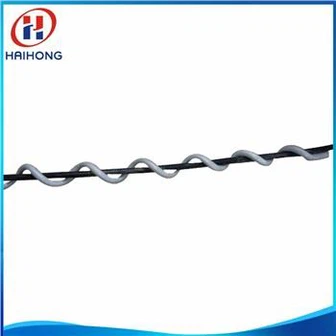Installing Cable Clamps: Requirements For Vibration Dampening And Safety
Cable clamps, also known as cable dampers or vibration dampeners, are critical tools to help prevent damage to fiber optic cables and other types of communication lines. When cables are subject to shocks, vibrations, or other types of physical stress, it can cause signal loss, data interruptions, or even complete loss of service. Installing cable clamps is an essential step in ensuring that communication lines remain secure and functional, even in the face of environmental challenges.
The primary purpose of cable clamps is to hold fiber optic and other communication lines in place, preventing them from falling or getting loose due to vibrations or other types of physical stress. Cable clamps can be installed either during the construction phase or later on, when the communication lines need to be repositioned or added onto. However, the number and placement of cable clamps must meet certain requirements to ensure that they are effective in minimizing vibration and ensuring that the cables remain secure.
The first step in installing cable clamps is to assess the level of vibration that the communication lines will be subjected to. This will help determine the minimum number of cable clamps that are needed to minimize the vibration and prevent the cables from coming loose. In general, cable clamps should be installed at intervals of no more than 0.5 meters, depending on the amount of vibration the communication line will experience. This means that if the cables will be subjected to moderate amounts of vibration, cable clamps will need to be installed more frequently.
In addition to being installed at regular intervals, cable clamps must also be installed in a specific pattern. Cable clamps should be installed in an alternating pattern, with one clamp placed on the left side of the cable and the next clamp placed on the right side. This prevents the cable from being twisted or bent, which can cause signal loss or other types of damage.
Another important requirement for cable clamp installation is that the cable clamps themselves must be secure and designed to withstand strong forces. They should be made from materials that are resistant to corrosion, such as stainless steel or aluminum, and should be able to securely lock onto the cable without causing damage. Additionally, the clamp should be able to absorb vibration and reduce the amount of stress on the cable.
Finally, it is essential to follow all safety requirements when installing and maintaining cable clamps. Installers should wear appropriate safety gear, such as gloves, hard hats, and safety glasses, and follow all local and national safety regulations. Additionally, regular maintenance is necessary to ensure that the cable clamps remain in good condition and do not pose a risk to workers or the communication lines.
In conclusion, cable clamps are essential tools for ensuring the safety and functionality of fiber optic and other communication lines. The number and placement of cable clamps must meet certain requirements to effectively minimize vibration and ensure that the communication lines remain secure. By following these guidelines and using quality cable clamps, we can ensure that communication lines remain effective and reliable, even in the face of environmental challenges.







